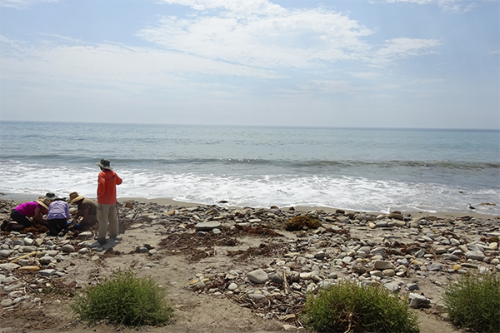$22 Million Approved to Restore Habitats, Wildlife and Recreation Impacted by Refugio Beach Oil Spill
NOAA, and the state and federal Trustees working on restoring habitat and resources impacted by the Refugio Beach oil spill near Santa Barbara, have released a Final Damage Assessment and Restoration Plan and Environmental Assessment (PDF, 183 pages).
The final plan describes how the oil spill injured birds, marine mammals, and marine habitats, and impacted human uses, like recreation and beachgoing.
- 2,200 acres of subtidal and fish habitats, and 1,500 acres of shoreline habitats were impacted by the spill
- More than 230 marine mammals like seals and dolphins were injured or killed
- More than 550 birds representing 28 different species were killed
- More than 140,000 user-days, meaning the number of days individuals weren’t able to recreate in and around Refugio Beach because of the spill, were lost
The plan proposes $22 million in restoration projects to restore the wildlife and habitats, and to compensate the public for the impacts to recreation.
- $6.1 million to restore subtidal and fish habitats
- $5.5 million to restore shoreline habitats
- $2.3 million to restore marine mammals
- $2.2 million to restore birds
- $3.9 million to restore recreation opportunities impact by the spill
- $2 million for additional planning, project implementation and oversight
NOAA is expected to lead subtidal and fish, and marine mammal restoration projects.
The subtidal work will focus on restoring red abalone populations in local Marine Protected Areas, eelgrass beds in Refugio Cove and the surrounding area, and sand-dwelling kelp offshore of Goleta Beach.
Marine mammal restoration will include; enhancing existing seal and sea lion stranding response and rehabilitation efforts in Santa Barbara and Ventura Counties, and increasing capacity of existing dolphin and whale entanglement response programs in the Santa Barbara Channel.
The Trustees developed the final plan based on a multi-year assessment that started in 2015, and public input on a draft plan released in April 2020. Along with their own scientific experts, they solicited public input from academia, land managers, and other community stakeholders to understand how the spill affected the surrounding resources, and what restoration projects could help restore them.
Funding for the projects will come from a settlement with Plains All American Pipeline, owners of an on-shore pipeline (Line 901) that ruptured in May 2015 and released more than 123,000 gallons of heavy crude oil. The oil flowed through a culvert under U.S. Highway 101 and adjacent railroad tracks, and approximately 53,000 gallons reached the Pacific Ocean, polluting state beaches that included Refugio and El Capitan. The oil then reached other beaches as far south as Los Angeles County.
The Trustee agencies include NOAA, the United States Department of the Interior through the Fish and Wildlife Service; California’s Department of Fish and Wildlife’s Office of Spill Prevention and Response, and Department of Parks and Recreation, the California State Lands Commission, and the Regents of the University of California.
For more information, contact Laurie.Sullivan@noaa.gov.
 An official website of the United States government.
An official website of the United States government.

